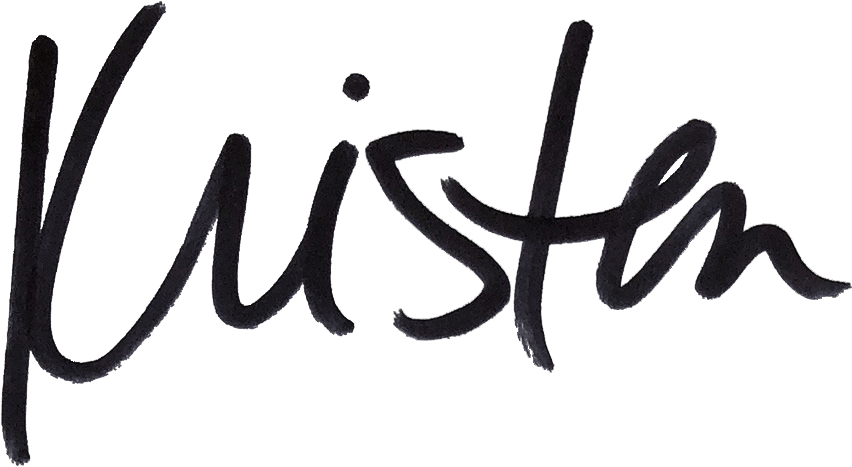Since you’re in business, you’re inevitably going to find three types of people as you go about your days. Those who buy your product, those who have no interest in your product, and those who are on the fence about what you offer. People who are “thinking about it.”
It’s the last group we’re going to address together today, ’cause they’re the most likely to trip you up.
First, we both know they’re not thinking about it. They’re not sitting at home hemming and hawing about buying your stuff. They’re merely throwing up a blocker excuse to hide the REAL reason they haven’t purchased just yet.
It’s your job to stop “thinking about it” dead in its tracks.
Here are some options for what your potential customers are REALLY thinking.
10 things people mean when they say “I’m thinking about it:”
I’m embarrassed that I even want this.
Buying this feels selfish or indulgent. I’ve already spent so much money on ________.
This money could be used for ___________ instead.
I’ll do it later, when I have ____________ all figured out.
I want to but I’m scared.
I want to, but money is tight.
I’m afraid someone I love/trust will make fun of this choice.
I’m tired of spending money and energy on things that haven’t delivered on their promises.
I don’t trust that this will be as amazing as you say it will.
I don’t want what you’re offering, but I don’t want to hurt your feelings.
These reasons are often painful, so you don’t want to go blasting through “I’m thinking about it” with an e-mail that starts, “STOP BEING SO EMBARRASSED ABOUT BUYING MY _______.” Or “Your husband is a douche for not wanting you to buy more ____________.” Or “just STOP being scared already.”
There’s no need to GO ALL CAPS LOCK on anyone’s ass. (And it won’t work anyway.)
Maybe you’ll get to the real reason behind the “thinking about it,” maybe you won’t. That doesn’t mean you give up, it just means you’re clued in to a range of possibilities about what’s really going on in the mind of your potential customer-person.
I know your first inclination is to take “I’m thinking about it” for an answer.
“I’m thinking about it” even feels like an answer, so you’re tempted to leave that person who’s thinking alone. Only at some point the thinking has to end.
It’s your job to end “thinking about it” phase with the “f” word: follow-up.
Yup, follow-up. Which is a straight-up sales word, and which might send you off to dry heave for a moment. ::pauses while you go and retch::
I know you don’t want to check in on people who’ve inquired about your services to see if they have any more questions. You don’t want to “bother them” or “sound like a used car salesman” or “be pushy.” I know.
Only follow-up is not a dirty word. Following up is as simple as telling a person when you’re going to follow up (24 hours, 72 hours, a week, etc…) and then checking in at the time you said you would.
If you can say, “Hi, Just wondering if you had any other questions for me about _______,” you can follow up with your potential customers. They’ll be reminded to bring you back onto your radar, and you’re more likely to get either a “yes” or a “no.” Either way, follow-up brings an end to your voyage through murky, undiscovered territory, so we’ll call it a win.
Let’s show you follow-up in action with specific examples (and scripts! Hooray!) so you can see it for yourself. Nothing scary happening here, promise!
3 follow-up scripts to make action happen
Script #1: the basic follow-up.
Hey there, ______!
We had talked about ___________ on [date], and I’m circling back around to see if you had any additional questions for me.
Please let me know if there’s any way I can help you make a decision! If I haven’t heard from you, I’ll check again in 72 hours, so I can be sure I’m taking good care of you.
[your name]
In this script, you’re making room for questions to come your way, and you’re letting this person know that you’ll be back in 72 hours to check in again. This subtly lets the person know that delay tactics like ignoring the message won’t work, so they might as well answer you now. You’re also going to check in 72 hours from now, just as you said you would.
Boomerang is brilliant for this. It’s an app for Gmail that allows you to fling messages out of your inbox and decide when they’ll return. In this case, you’ve said you’ll follow up in 72 hours, so this e-mail can return then! Done and done, you’re a freaking follow-up maven. Nab Boomerang here.
Script #2: Invite talk of concern.
Hi, ______,
You had asked about ________ and I wanted to check in to make sure you didn’t have any other questions, comments, or concerns for me.
If there’s any way I can help you get [your product/service], let me know!
[your name]
P.S. I’ve got you on the calendar to check in again in 72 hours — want to make sure you’re taking care of. 😉
KRISTEN!! Why would I invite someone to talk about their concerns!?
When you make space for dialogue by asking about something like concerns, you often get the REAL reason people aren’t buying to surface. Sometimes you can overcome the objection, sometimes you can’t — but KNOWING keeps you from running through 3,783 scenarios in which it’s all your fault when a person isn’t buying. The real reason could be that a person’s marriage is ending, or she’s between babysitters, or he’s down to his last $470 and that won’t even cover rent for the month. The concerns people bring to the table are often issues you can do absolutely nothing about, but creating a space where honest communication can occur is incredibly powerful for connecting as humans.
Sometimes, of course, you can address concerns and make the sale. If a person is worried that her order won’t ship within 3 days, but you assure her that she can get it in 48 hours, done! She’s buying!
Script #3: for a potential customer you’ve already met or know reasonably well
In this case, you get personal. The more details you can add to show that you’re listening, that you understand the concerns being expressed, and that you’re a human who actually gives a shit about this person, the better your sale will be. (Also, the better your LIFE will be.)
_________!
I’m so excited to work with you, and I’m popping into your inbox to see if you had any additional questions for me about _________.
When we talked, you mentioned __________, and I’m totally going to ___________ as a result.
I’ll circle back around in 72 hours to check again, since I know you’re busy!
Talk soon,
[your name]
When are you going to follow up with every inquiry, question, or potential booking that crosses your inbox in the next few days? Set up a follow-up time frame — like 24 hours, 48 hours, or 72 hours — and then put it on your calendar.
Pencil that in, and you’ll find that you’re seeing more money flowing into your business without a whole lot more effort. You’re just mastering the art of being patiently persistent. And you’re no longer afraid of the “f” word: follow-up.
P.S. To learn WAY more about making money and follow-up, I recommend listening to episode 9 of the That’s What She Said podcast: Pay Me, Dammit! Listen in here or subscribe here.










